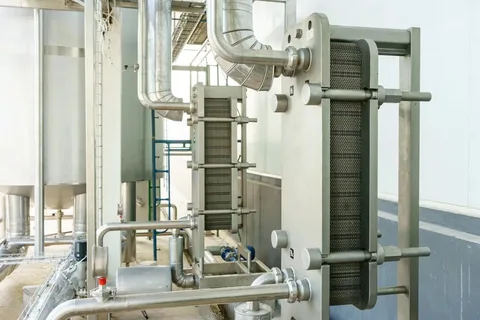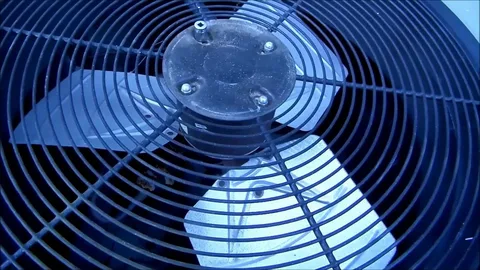The heat exchange system has been at the forefront of advancements in thermal management. With increased efficiency, more businesses are taking advantage of the benefits associated with this technology. In this blog post, we’ll discuss the advantages of an advanced heat-exchange system and how it can benefit your business. From improved energy efficiency to cost savings, an advanced heat-exchange system can greatly benefit any business. Read on to find out more about this hot topic.
The Importance of Efficient Thermal Management
Efficient thermal management is crucial for businesses across various industries. Businesses can optimize energy usage, reduce costs, and create a comfortable and productive working environment by effectively managing heat.
One of the primary benefits of efficient thermal management is improved energy efficiency. When heat is effectively transferred and controlled, less energy is wasted, resulting in lower utility bills and reduced environmental impact. It can lead to significant cost savings for businesses in the long run.
In addition to cost savings, efficient thermal management contributes to the overall comfort of employees and customers. By maintaining a consistent temperature and air quality, businesses can create a pleasant working environment that promotes productivity and well-being. Proper ventilation and heat recovery systems also help reduce humidity and prevent mould growth and other harmful pollutants, ensuring a healthier space for everyone.
What is Mechanical Ventilation And Heat Recovery?
The Mechanical Ventilation And Heat Recovery systems are key components of an advanced heat exchange system. But what exactly do they entail?
Mechanical ventilation refers to supplying fresh air and removing stale air from a building using mechanical systems, such as fans and ductwork. It ensures a constant supply of clean, oxygen-rich air, which is essential for maintaining a healthy and comfortable indoor environment. By removing pollutants and excess humidity, mechanical ventilation helps prevent mould growth and other harmful substances, creating a safer and more pleasant space for occupants.
Heat recovery, on the other hand, involves capturing and utilizing the heat that is generated within a building. The heat recovery system extracts heat from outgoing air or wastewater. It transfers it to incoming fresh air or water, significantly reducing the energy required to heat or cool a space. It not only saves on energy costs but also minimizes the carbon footprint of a building.
How Passive House Ventilation Systems Work?
Passive ventilation systems are an innovative solution for achieving optimal indoor air quality and energy efficiency. But how do they work?
Passive House Ventilation System operate on controlled airflow and heat recovery principles. These systems use mechanical ventilation units with heat recovery (MVHR) to extract stale air from a building and replace it with fresh air. The magic happens in the heat recovery element – as the stale air is removed, the system recovers its heat. This recovered heat is then used to pre-warm the incoming fresh air, reducing the need for additional heating or cooling.
The MVHR unit consists of two separate air streams: the outgoing stale air and the incoming fresh air. These air streams pass through a heat exchanger, which transfers the heat from the outgoing air to the incoming air without mixing them. The result is constantly fresh, filtered air with minimal heat loss.
Passive House-ventilation systems are designed to operate silently, efficiently, and automatically. They continuously monitor the indoor air quality and adjust the ventilation rates accordingly. With intelligent controls, these systems can adapt to changing occupancy levels and outside temperatures, ensuring optimal comfort and energy performance.
The Evolution of Home Heat Recovery Technology
As technology advances, so does the evolution of Home Heat Recovery technology. Over the years, there have been significant advancements in the efficiency and effectiveness of heat recovery systems, revolutionizing how we manage thermal energy in our homes.
Home heat-recovery systems were often bulky and complex in the past, requiring extensive installation and maintenance. However, recent innovations have led to more compact and user-friendly designs that are easier to install and operate. These modern heat recovery systems are also equipped with smart controls, allowing homeowners to adjust settings and monitor energy usage from the convenience of their smartphones.
Another notable evolution in home heat-recovery technology is integrating advanced filtration systems. These systems recover and reuse heat and filter out pollutants and allergens, ensuring cleaner and healthier indoor air quality. It is particularly beneficial for individuals with respiratory conditions or allergies.
Benefits of Advanced Passive House Heat Exchanger for Businesses
Are you tired of sky-high utility bills? Do you want to create a comfortable and productive working environment for your employees? Look no further than an advanced passive house heat-exchanger. This innovative technology offers numerous benefits for businesses of all sizes.
One of the primary advantages of an advanced Passive House Heat Exchanger is its ability to reduce energy consumption and lower operating costs significantly. By recovering and reusing heat from stale air, these systems minimize the need for additional heating or cooling, resulting in substantial energy savings. Not only will this benefit your bottom line, but it will also reduce your business’s carbon footprint and contribute to a more sustainable future.
An advanced passive house heat-exchanger can greatly improve indoor air quality. By filtering out pollutants and allergens, these systems create a healthier environment for your employees, increasing productivity and well-being. Moreover, by reducing humidity and preventing mould growth, these systems can help prevent costly damage to equipment and minimize maintenance costs.
Applications of Advanced Heat Exchange System For Home
If you think advanced heat exchange systems only benefit businesses, think again! These innovative systems have numerous applications for homes as well. By incorporating an advanced heat exchange system into your home, you can experience a new level of comfort, energy efficiency, and sustainability.
One of the main applications of an advanced Heat Exchange System For Home is heating and cooling. By recovering and reusing heat from the air, these systems can efficiently warm or cool your home, reducing your reliance on traditional heating and cooling methods. It lowers your energy consumption and saves you money on your utility bills.
Another application is in improving indoor air quality. Advanced heat exchange systems can filter out pollutants, allergens, and other contaminants from the air, ensuring cleaner and healthier indoor air. It is particularly important for individuals with respiratory conditions or allergies, as it can help alleviate their symptoms and improve their overall well-being.
Factors to Consider When Choosing an Efficient Heat Exchanger Vent
When choosing an efficient Heat Exchanger Vent, several factors must be considered to ensure you make the best decision for your business.
Firstly, it’s important to assess the size and capacity of the heat-exchanger vent. You’ll need to determine the appropriate size based on the airflow requirements of your space. A too-small vent may not effectively remove stale air and provide adequate ventilation, while a too-large vent may result in unnecessary energy loss.
Secondly, consider the energy efficiency of the vent. Look for vents with high heat recovery efficiency ratings, as this will maximize energy savings and minimize your carbon footprint.
Additionally, think about the maintenance and cleaning requirements of the vent. Opt for a vent that is easy to clean and maintain, as this will ensure optimal performance and longevity.
Consider the noise levels of the vent as well. A loud vent can distract and disrupt employees, so choose a vent that operates quietly to maintain a comfortable working environment.
Choosing the Right House Heat Exchanger
When choosing the right House Heat Exchanger, a few factors must be considered to ensure you make the best decision for your home. First and foremost, you’ll want to assess the size and capacity of the heat exchanger. You are choosing a size that can effectively meet the airflow requirements of your space. Opting for a heat exchanger that is too small may not effectively remove stale air and provide adequate ventilation. At the same time, one that is too large may result in unnecessary energy loss.
In addition to size, it’s crucial to think about the energy efficiency of the heat exchanger. Look for models with high heat recovery efficiency ratings, as this will maximize energy savings and minimize your carbon footprint. Energy-efficient heat exchangers save you money on utility bills and contribute to a more sustainable environment.
Consider the maintenance and cleaning requirements of the heat exchanger as well. Choose a model that is easy to clean and maintain, ensuring optimal performance and longevity. Regular maintenance and filter replacements are necessary to keep your heat exchanger running smoothly.
FAQ’s
Q: How does an advanced heat-exchange system save energy?
A: Advanced heat exchange systems recover and reuse heat from outgoing air, reducing the need for additional heating or cooling. It significantly lowers energy consumption and, in turn, lowers utility bills.
Q: Are advanced heat exchange systems noisy?
A: No, they are not! Modern heat exchange systems are designed to operate silently, ensuring a quiet and comfortable working environment.
Q: Can an advanced heat-exchange system improve air quality?
A: Absolutely! These systems have advanced filtration capabilities, removing pollutants, allergens, and other contaminants, leading to cleaner and healthier indoor air quality.
Conclusion
An advanced heat exchange system is a game-changer in thermal management, offering numerous business benefits. From improved energy efficiency to cost savings, these systems can revolutionize your workplace environment.



